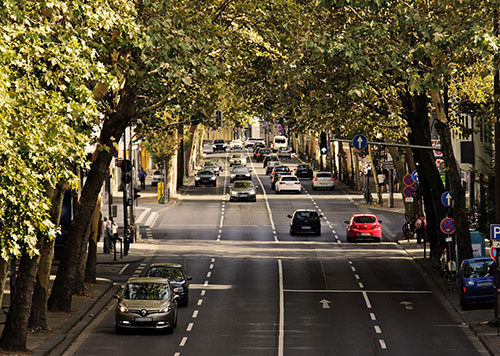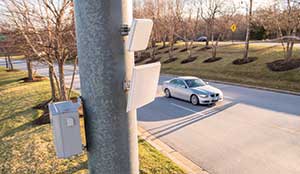Public Safety Grants Remain Strong—Even as Other Programs Shrink
Grant Funding Still Thrives in Public Safety: How Agencies Can Secure Support for LPR Technology Across the country, law enforcement agencies...

If you're a police chief, city leader, or member of a law enforcement agency, keep reading—this one's for you.
As you already know, many cities across the country have recorded an increase in crime since the start of the COVID-19 pandemic. Violent crime, for one, has risen by 12 percent in U.S. cities, and motor vehicle theft has climbed by a whopping 48 percent.
In your position, you are undoubtedly always looking for new and innovative ways to fight crime and boost public safety in the communities you serve. So here's one: Whether or not you're already using license plate reader technology, you can use the data that's collected and analyzed for several critical types of cases.
In our new guide, developed in partnership with Police1, we outline five ways LPR data can help keep your community safer.
Here's a sneak peek at the first three:
Identifying and recovering stolen vehicles is the bread and butter of LPR, says Julio Valcarcel, a retired Maryland state trooper and vice president of sales for Leonardo. Although LPR got its start over 40 years ago in the U.K., early adopters of the technology in the U.S. included task forces focused on vehicle theft. These groups used the technology to break up car theft rings and thwart additional crimes committed using stolen vehicles.
“Since then, recovering stolen vehicles has definitely been a large part of what LPR is seen as being useful for,” says Valcarcel, “but over time it’s expanded beyond that, and we continue to try to help law enforcement agencies use the tool for not only stolen vehicles, but for many
other things.”
The most common practice is to create a hot list of plates associated with wanted vehicles and use the cameras as 24/7 eyes on the roadways.
Even if your agency doesn’t invest in the cameras, you can still contribute to hot lists so other agencies are aware.
As more law enforcement agencies nationwide adopted license plate reader technology, the potential uses expanded with the launch of AMBER and Silver alerts. When AMBER Alerts were created in 1996 to help locate missing children, LPR provide an always-on tool to augment the eyes of officers and other drivers.
LPR systems receive both AMBER and Silver alerts so that officers in the field are aware of urgent searches for abducted or missing persons. This is another example of how sharing vehicle data helps law enforcement across agencies better serve the public.
The investigative uses for LPR are limited only by the imagination of investigators (as well as the agency’s policies and any regulatory constraints).
LPR cameras can capture information for up to 900 vehicles per minute, including the license plate number, date and time stamps, GPS coordinates and a color photo showing a significant portion of the vehicle. The system automatically checks the captured plates against the hot lists and provides an instant alert when a match is found so that officers can respond.
This is a great way to catch a known suspect, but it’s also useful to determine which vehicle or vehicles might be involved with a crime.
Investigators can review specific periods of time associated with an incident to identify vehicles that seem to be present near crime scenes, as
well as vehicles that travel together in the vicinity. This analysis helps investigators establish patterns of behavior so they can follow up and
identify suspects, make arrests and prevent further criminal activity.
For the full list of ways law enforcement agencies can utilize LPR data, download our free guide now, How LPR Data Can Help Keep Your Community Safer.

Grant Funding Still Thrives in Public Safety: How Agencies Can Secure Support for LPR Technology Across the country, law enforcement agencies...

The Leonardo/ELSAG team is off to Denver for the largest law enforcement event of the year, the International Association of Chiefs of Police (IACP)...

As retail crime surges to unprecedented levels, Leonardo's cutting-edge plate recognition technologies offer a robust solution to safeguard...